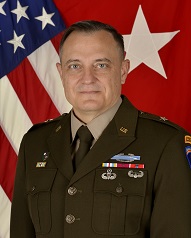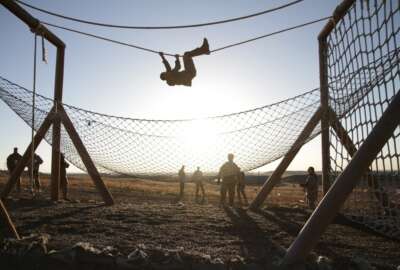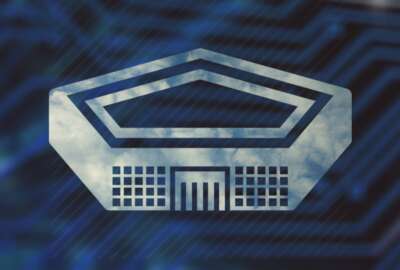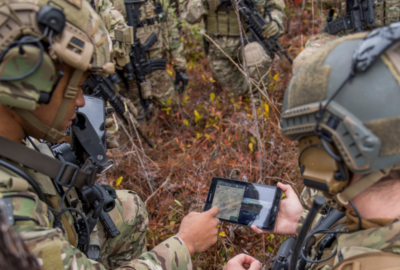Army lays out high level concepts for next-gen C2
Army PEO C3N is obtaining industry feedback as part of its market research as it develops solicitations for the next generation command and control effort.
The Army’s latest version of its “characteristics of need” for its next generation command and control initiative is its North Star.
Released last week, the characteristics of need for NGC2 is a precursor to a bigger multi-year effort to update and standardize command and control across the Army.
Maj. Gen. Patrick Ellis, the director of the Command and Control Cross Functional Team, said at the recent Army Technical Exchange Meeting 13 in Savannah, Georgia, that the goal isn’t to release a hyper specific requirements document, but a high level concept paper that other requirement documents could be based on.

“The folks inside Army Futures Command are working toward the requirements documents that we define and provide those to [PEO C3N] for the solutions. So instead of writing hyper prescriptive requirements documents, our goal is to write a little bit more broadly so we’ve got flexibility inside of that as the technology changes,” Ellis said in an interview with Federal News Network. “We will get specific in the areas that we need to, but to meet the requirements for [PEO C3N], the obligation we have to provide them with a quality document to look at and say, ‘This is what I’m trying to solve for the Army as the requirements team,’ that’s what we’re working on. We want to give them enough to get them moving, but not necessarily being hyper prescriptive because a document we write today, a year from now could be out of date already.”
Mark Kitz, the program executive officer for command, control communications and networks (PEO-C3N), said the characteristics of need should be looked at as design principles.
“These are the principles we want industry to follow that are best practice in open industry that allow us to more readily integrate new technologies or readily integrate military specific capabilities to what’s really commercial infrastructure,” Kitz said. “We certainly don’t want to be prescriptive. We don’t have a long history of prescribing good solutions. We want those solutions to come from industry, but we also want to adhere to these design principles of being open, of allowing us to get quick to time to market for capability, allowing us to have diverse application sets on a diverse set of technologies, and so that’s what you’re seeing with the capability needs statements and the characteristics of need.”
The Army released the first version of the characteristics of need in late spring and used an exercise called NetModX to help further refine the document.
The current approach to command and control is disparate and lacks interoperability. A common complaint among commanders is they don’t train as they would fight, which means learning new systems and capabilities in theater.
Solicitations for NGC2 components coming
With the release of this second version, Ellis said the service is kicking the NGC2 effort into gear for 2025 and beyond.
“We use that as a document that we’re pointing toward as we start to write the subdocuments inside of next generation C2. There’s not going to be one document that’s going to solve all the requirements of the pieces that we need for the requirements documents for NGC2,” Ellis said. “We’re using that as we write the capability of needs statement, which is a thing we’ll do for software inside of the data layer. We’re using that as we look to collapse documents down. We have some existing documents that have been around for a very long time that we need to probably collapse and reorganize to fit better into the next generation command and control concept.”
PEO C3N collected industry feedback already once through a request for information released in the fall. Kitz said from that RFI, PEO C3N did about 85 one-on-ones with industry to collect specific feedback on the best structure of NGC2.
While AFC updates the requirements documents, Kitz’s team at PEO C3N will develop a solicitation in the coming months with a plan to award a NGC2 contract by third quarter of 2025.
Army outlines technology stack
“The next step is really working with industry on feedback, on the right contract type, on the right mix of how vendors will participate across the technology stack,” he said. “So over the next two months or so, we’ll be iterating with industry to come to the right contract approach. I think we’re being a little bit deliberate and making sure that we get the right approach because too often in these government acquisitions, we choose the wrong instrument because we race to a solution. In this case, we want to be deliberate. We want to engage with industry, and sometime in the January/February timeframe, we’ll come to its decisions that we can get to that third quarter 2025 award.”
Ellis and Kitz say all of this planning and research led to specific updates to the characteristics of need.
For example, Ellis said adding the initial technology stack for NGC2 to the characteristics of need was an important improvement that came from industry feedback.
“This is a pictorial description of the technology stack. This is what we think we’re going to going to need for the next generation command and control. We also explain that verbally,” Ellis said. “In addition to that, there’s a couple other updates as well, talking about multinational partners and having the ability to interoperate with our partners. We really spelled out that language very deliberately. We also added some stuff in there about embedded training, and modeling and simulation to stimulate where we’re trying to go and get folks thinking about, what’s the art of the possible there?”
Copyright © 2025 Federal News Network. All rights reserved. This website is not intended for users located within the European Economic Area.
Jason Miller is executive editor of Federal News Network and directs news coverage on the people, policy and programs of the federal government.
Follow @jmillerWFED






